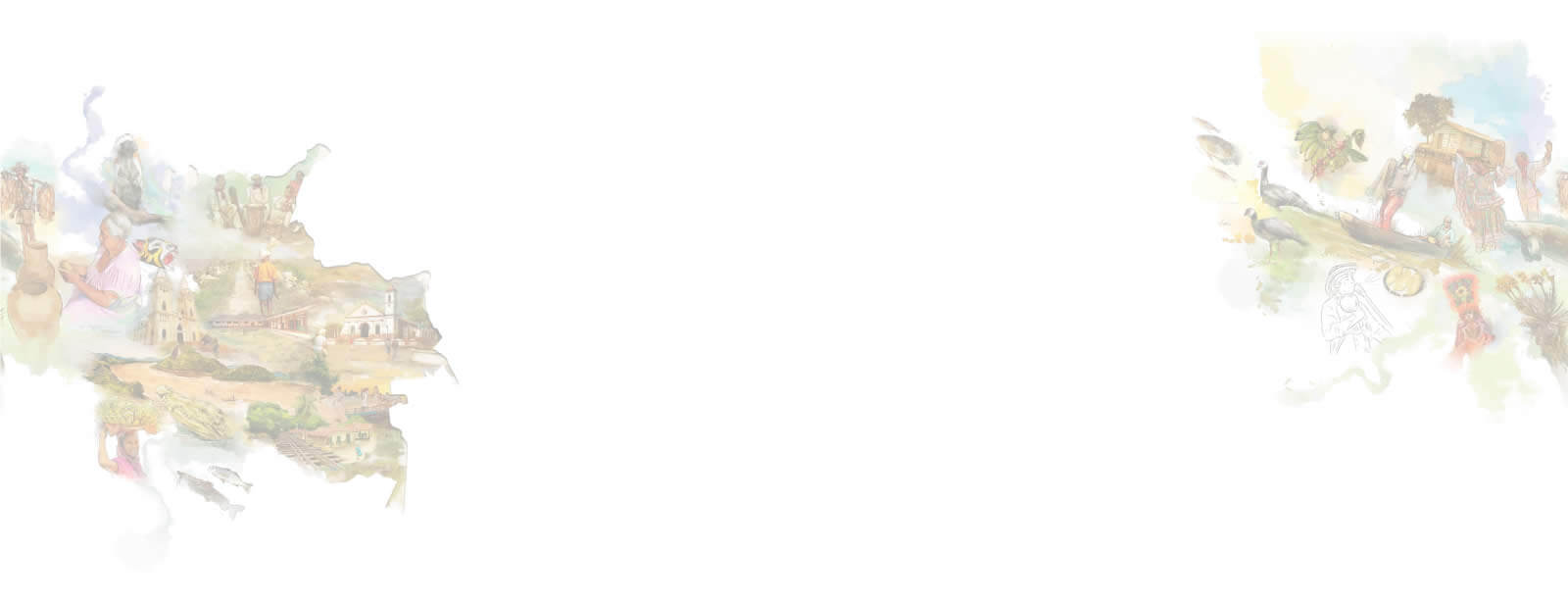Colombia is a country just waiting to be discovered – a country with stories in every corner, which can be seen in its beautiful landscapes, in the people who inhabit them, and in the culture that is woven throughout.
In this country, where memory endures, you’ll find towns that’ll captivate you. Whether it's for their beauty, culture, architecture, or traditions, these towns have stood out across the years and have been declared national heritage sites: they reflect our identity and are the very voice of Colombia's history. Let's explore some of the most charming towns in the Eastern Colombian Andes region and uncover what makes each of them truly special.
Monguí – A Sustainable Tourist Destination

With its traditional colonial architecture, stunning landscapes, and unmatched craftsmanship, Monguí, stablished in 1601, earned the title of "Boyacá's Most Beautiful Town" in 1980 and has been a Colombian Sustainable Tourism Destination since 2018. Renowned for its tranquility, the hospitality of its inhabitants, and its traditional gastronomy, Monguí invites us to experience the history that is preserved in its streets.
Moreover, Monguí has been the favorite ball manufacturer in Colombia since 1930. Employing traditional techniques, the town sews and vulcanizes leather balls, which have found their way to Colombian football leagues and markets in Venezuela and Central America.
Here are some top places to visit and things to do in Monguí:
- Main Square: Start your exploration in the heart of Monguí: its Main Square (Plaza Principal). Admire the colonial architecture, and soak in the town's charming atmosphere.
- The Royal Calicanto Bridge: Visit the picturesque stone bridge, an iconic landmark that adds to Monguí's historic charm.It was built in the 17th century, linking two of the main trails for the Muisca people. Today, it remains as a historic monument belonging to one of the most beautiful towns in Colombia.
- Basilica Menor of Our Lady of Monguí: Its construction began in 1603 and took a century to be completed. The temple is this charming town’s foremost religious construction and perfectly exemplifies the colonial architecture and religious art of the time.
- Handicraft Tradition: This beautiful town of the Eastern Andes, besides manufacturing high-quality handmade footballs, also offers a handcraft route that’ll take you through ceramics, weaving, jewelry, leather goods, and wood and stone carving.
- Monguí Lagoon: this hidden lagoon is surrounded by a paramo (Andean moor) ecosystem with local flora and fauna, such as imposing frailejones and white-tailed deer, making it the best place for a natural getaway.
San Juan de Girón – A National Monument

Its colonial-era architecture, characterized by white walls and clay roofs, earned San Juan de Girón, founded on February 14, 1631, a National Monument declaration in 1959. The town hosts yearly pilgrimages during Holy Week, attracting visitors from around the globe who come to celebrate the Day of the Lord of Miracles, which happens to be the region's patron saint.
Girón has a perfect combination of colonial houses, old tourist sites, and modern places to visit outside of the town’s historic center, making it a place for all tastes. Here are some of those iconic spots you can visit:
- Main Park: During colonial times, it was the town’s busiest square, given the fact it held the local market on Sundays. Here, you’ll also find the Minor Basilica of Saint John the Baptist, considered one of Girón’s most beautiful works of architecture.
- Calicanto Briges: Due to the location of Las Nieves Creek, this series of six bridges provide the only access to the Main Park from the southern end of town.
- Friar Manor Museum: Located in front of the Main Park, this emblematic site is where Colombia’s Act of Independence was signed. It currently acts as a colonial museum with everyday objects from the 18th century, a handcraft gift shop, and a restaurant where you can try traditional dishes.
- Riverside promenade: One of the most famous and beloved sites in Girón, numerous cultural and leisure activities take place here, including the Orchestra Festival held in August during the municipality's festivities.
El Socorro – A Town of History and Remembrance

This heritage town plays a great part in Colombian history, having witnessed significant events, from the Revolt of the Comuneros to the Thousand Days' War, which forged the collective memory of Colombian people. El Socorro was founded in 1638, declared a site of national importance in 1963, and a heritage town in 2010.
El Socorro is the birthplace of national heroes such as Manuela Beltrán and Juan Francisco Berbeo, as well as the inspiration for composer José A. Morales and his traditional song "Pueblito viejo". Some places worth visiting in this historic town are:
- Historical Center: Declared a National Cultural Interest in 1963 and a National Monument in 1969. Its traditional colonial buildings are embellished by the town’s beautiful mountainous backdrop.
- House of Culture: Built by the late 18th century, it preserves a blend of colonial and republican styles. It started operating as House of Culture in 1954 under historian Horacio Rodríguez Plata and in it you can visit rooms dedicated to the Comuneros and to the Independence of Colombia.
- Co-Cathedral and Minor Basilica of Our Lady of Succour: This Renaissance-style temple is the largest stone cathedral in Colombia and one of the largest in South America. Its construction began in 1873 and, on June 16, 2015, it was elevated to a Minor Basilica by the Vatican.
- Convent of Saint John the Baptist of the Order of Friars Minor Capuchin: It was the first Capuchin convent founded in the Americas and the place where the proclamation of the independence of the "Free and Independent State of Socorro" took place on July 10, 1810.
- Concepcionist Monastery: In the 19th century, it housed the printing workshops of the most prominent newspapers of the time.
- Puente Comuneros: Declared a National Monument in the year 2000.
- Guanentá Upper Fonce River Fauna and Flora Sanctuary: This natural haven protects several endemic species and has close to 2,000 plant species that you can appreciate while breathing pristine Andean forest air.
Villa de Leyva – Home of One of Latin America’s Largest Squares
Nestled amidst beautiful mountains and La Candelaria desert, Villa de Leyva was declared a National Monument in 1954. Today, it preserves colonial-style architecture surrounded by a vast rural scenery. Founded in 1572, this town is considered one of the most picturesque and charming destinations in Colombia and many vibrant cultural events and festivals take place every year in its massive Main Square, one of South America’s largest.
This is one of the most beautiful towns in Colombia, worth visiting at least once. In addition to its architectural charm, Villa de Leyva is known for its cultural richness. The town is home to various museums that provide insights into its history and heritage. Must-see places include:
- Main Square (Plaza Mayor): Covering an area of approximately 14,000 square meters, this cobblestone square is considered Colombia’s largest and the main attraction of the town.
- House of Antonio Nariño Museum: Dedicated to the first translator of the Declaration of the Rights of Man and Citizen, from French to Spanish, in the Americas, this museum houses fascinating artifacts from the colonial and independence eras, allowing visitors to appreciate the architecture of the time.
- Paleontology Museum: Located in a 19th-century house known as "Casona el Molino de Osada”, this museum displays invertebrate fossils from various species such as Ammonoidea (ammonites), bivalves, gastropods, echinoderms, and vertebrates, including marine reptiles and fish, as well as diverse plant fossils.
- Terracotta House: A unique tourist attraction as it’s entirely constructed from clay, following the traditional indigenous style. This fascinating structure is a testament to the perfect blend of art, architecture, and sustainability.
Barichara – Colombia’s Most Beautiful Town

Immersed in a stunning mountainous scenery, Barichara conceals one of Santander's best-preserved landscapes. Founded in 1705 and declared a National Monument in 1978, Barichara is one of Colombia’s proudest heritage towns. The traditional clay-colored streets, colonial façades, cobblestone streets, and imposing church are just a few of its appealing charms, which attract travelers with a year-long pleasant climate and serene ambiance.
It’s often referred to as "the prettiest town in Colombia", and it’s known for its well-preserved historic architecture and beautiful natural surroundings that’ll make you fall and stay in love with it. Key highlights and things to do in Barichara include:
- Cathedral of the Immaculate Conception: A gathering place for the community, it is believed to have been constructed in 1838. The cathedral stands out for its reddish brickwork and imposing dome.
- Rafael Ortiz Prada Viewpoint Park: Located in the western side of the Suárez River Canyon, this is the best spot to admire the landscapes of the Eastern Andes and feel the cool valley winds.
- Aljibe Bookstore: The town's first and main bookstore throughout its history. It has become a must-stop for both foreigners and locals who want to accompany their reading with a good cup of Colombian coffee.
- Royal Road to Guane: Declared a National Monument in 1977, it’s considered part of Colombia’s Central-Eastern Royal Road Network. Guane is a beautiful town frozen in time, with a population of no more than 200 people – it offers the perfect setting to appreciate traditional architecture and catch your breath after the hike along the Royal Road.
Explore these captivating towns nestled within the Eastern Colombian Andes, each bearing its own, unique rich heritage. Delve into the nation’s history and fall in love with the cultural, natural, and human beauty that these extraordinary destinations offer. Embark on a journey of discovery and witness firsthand just what makes Colombia the country of beauty.
Related posts
- Experience Colombia’s countryside on a horseback riding tour
- Bucaramanga, the city of parks
- Ibagué, the music capital of Colombia
- Take a tour in La Candelaria, Bogotá



















